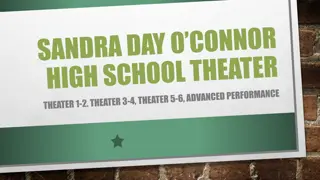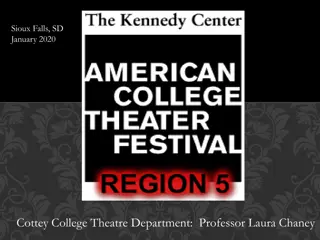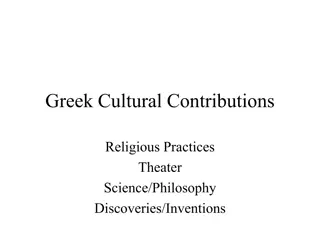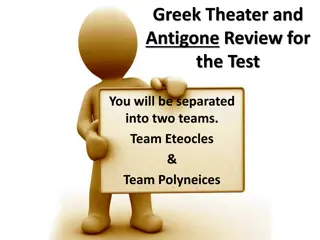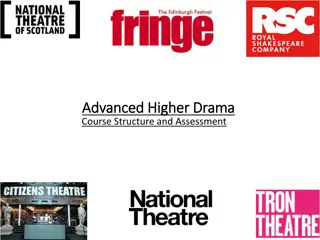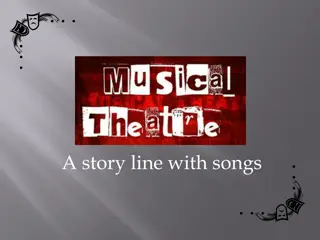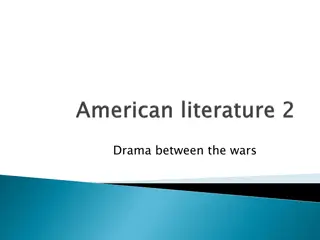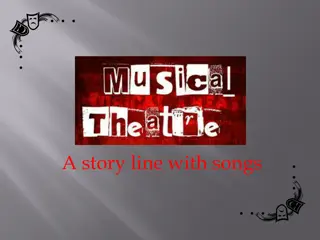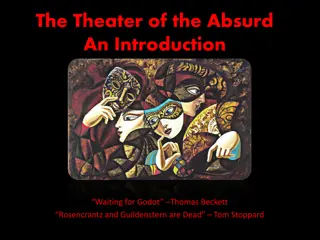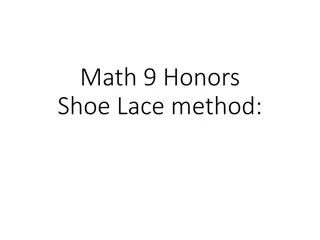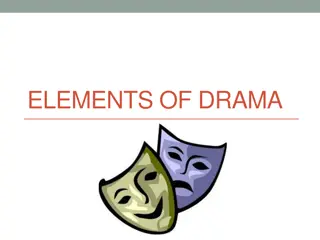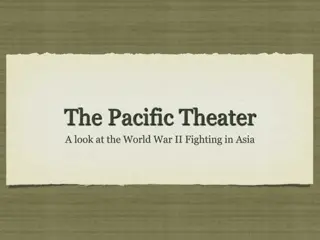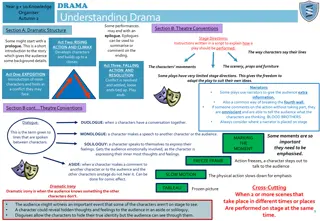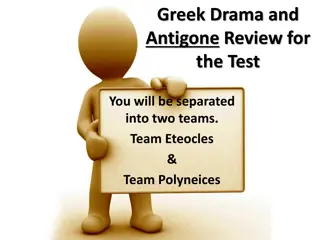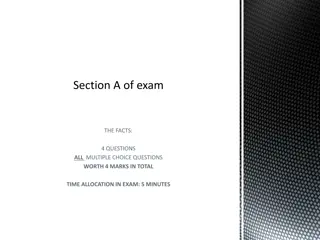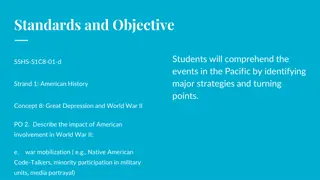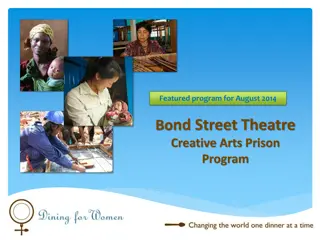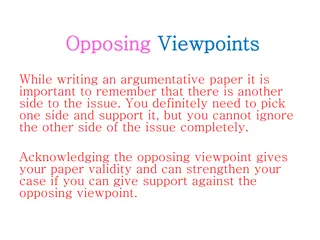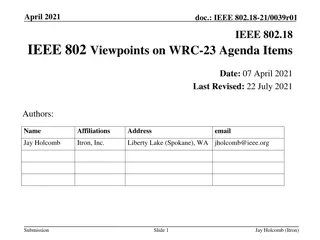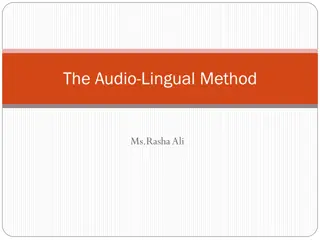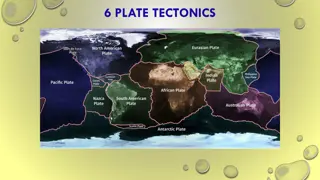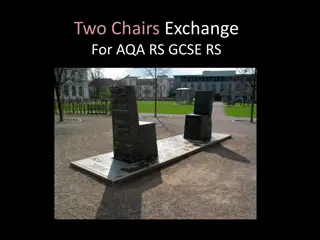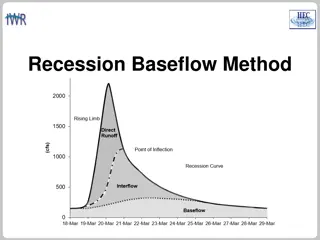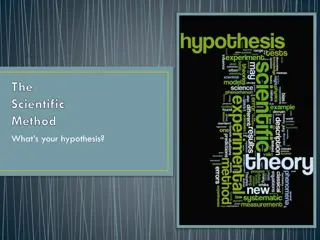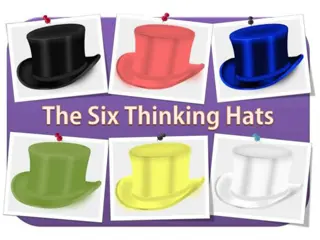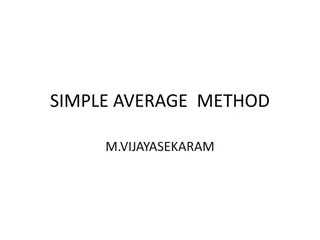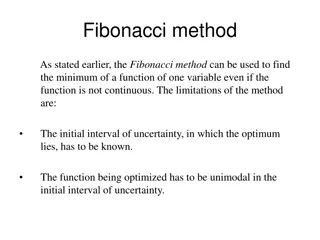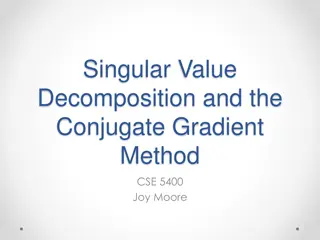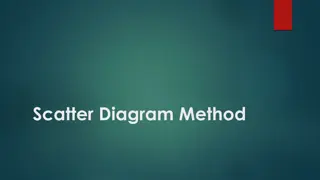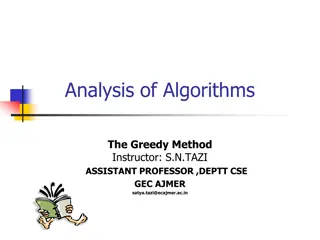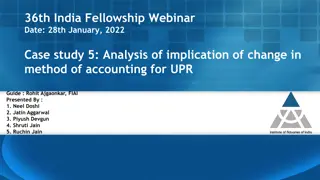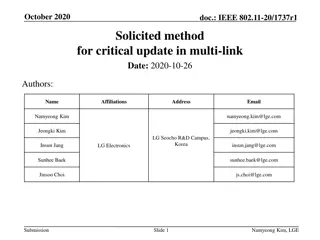Exploring The Viewpoints Method in Theater
Explore the Viewpoints method in theater, focusing on space, time, shape, kinesthetic sensation, and more. Discover how this method enhances presence, perception, and creativity in performance, emphasizing the importance of immediate experience and response.
Download Presentation

Please find below an Image/Link to download the presentation.
The content on the website is provided AS IS for your information and personal use only. It may not be sold, licensed, or shared on other websites without obtaining consent from the author. Download presentation by click this link. If you encounter any issues during the download, it is possible that the publisher has removed the file from their server.
E N D
Presentation Transcript
9(+ 1) Slides about 6 Viewpoints Wendell Beavers Saratoga International Theater Institute June 2015 *labels for sensing and perceiving the present moment *a technique of grounding presence in immediate experience *a practice of recognition and response
Subverting the method or Creating the New Method The original viewpoints conceived by Mary Overlie and applied at ETW were taught with a very strong strategic bias. The Viewpoints privileged space, time, kinesthetic, sensation(movement) and shape over story and emotion. There were pragmatic reasons for this.The formative period for this was 1978-1985. The new method completed the pallet of motivation to include all phenomena flowing through a moment.
The Creative Process of Perception Our world hangs together through shared space, time, kinesthetic relationships, visual presence, feeling and ..our mental projections(the story s we make up about every moment). The viewpoints work is a practice of bringing these areas of intrinsic connection into the foreground of consciousness through a physical play of recognition and response.
SPACE: Where Is All Speaking the Language of Location and Direction Being prompted to ask the question where am I leads to a process of location. In the viewpoints one performs this process. As this process is performed one s presence emerges. Presence is a function of the recognition of relationship to space, to other. When there is nothing left in our consciousness but where then we are performing space and, in turn, being performed by space.
TIME: When is All Being prompted to ask the fundamental question of when followed by subsidiary queries of how fast? how slow? how long? how short? leads to a process of recognition of a specific aspect of relationship to other. It is profound to move in relationship to other for reasons of time rather than story or psychological narrative unearthing deeper narratives and relationships.
Shape/Line: the visual aspect Treating the visual aspect of oneself or other as the dominant information Observation of the architectural arrangement of one s own body, and the arrangement of others Communicating through these arrangements of form and line to create a visual language
Kinesthetic Sensation: the sensation of being and moving Mindfulness of presence of body Includes all sensation of body: breath, heartbeat, weight, gravity, contact with environment through touch, compression of supporting surface, suspension from supporting surface, balance, falling and rising The sensation of being and the sensation of moving
STORY Story as Process rather than Product Story flows like a river through all time and space waiting to be called up by our awareness. It is the viewpoint of associations and mental contents arising from the activity of direct perception and experience of our physical world (space, time, shape/line, kinesthesia) Story is: 1)image that progresses and accumulates over time and 2) changes, revealing a narrative line or arrangement.
Emotion: Regard of the Feeling Self A moment of being the feeling dimension that is not connected to storyline of any kind, including a psychological story line. Emotion exists independent of story or psychology in the same way that the other 5 viewpoints do. It can give rise to story like all of the other viewpoints. A beat of pure presence or performance of oneself is one end of the spectrum and Grotowski s impulse work of moving from an emotion that has location and kinesthetic feeling would be at the other end.
What about Thinking and Imagination? Thoughts exist outside the realm of direct perception. To have a thought about the presence of the body separates us from the experience of the body. To have a thought about space, time, shape or line, or an emotion, disconnects us from the possibility of authentic communication. I am thinking about you, and you are thinking about me. As we drop thought we have the possibility of experiencing ourselves and one another.


